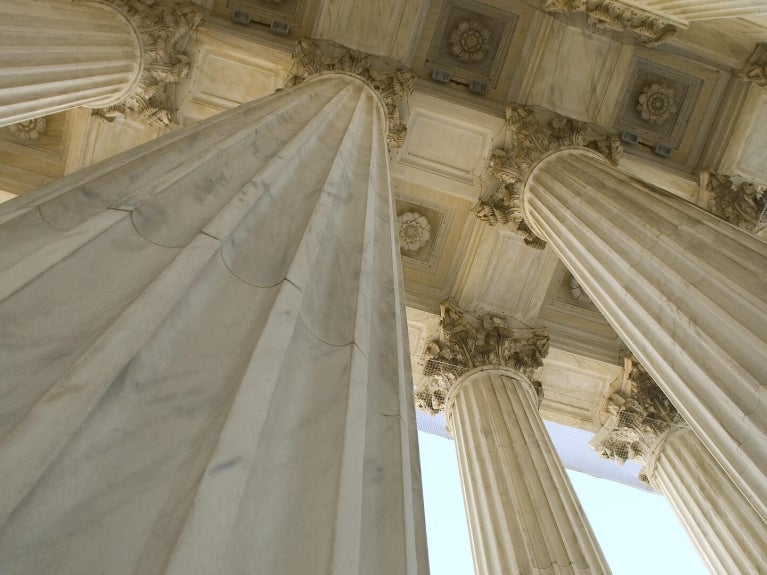Sign ‘O’ the Times: The Supreme Court Rules on Warhol v. Goldsmith

 The U.S. Supreme Court has affirmed the U.S. Court of Appeals for the Second Circuit's decision that the licensing of an image Andy Warhol created of musician Prince (titled "Orange Prince") based on a photograph by Lynn Goldsmith for use as a magazine cover was not fair use. In the case of Andy Warhol Foundation for the Visual Arts v. Goldsmith, the Court held that the first fair use factor did not favor fair use because Warhol's work, when used as a magazine cover, shared the same commercial purpose as the original photograph of Prince.
The U.S. Supreme Court has affirmed the U.S. Court of Appeals for the Second Circuit's decision that the licensing of an image Andy Warhol created of musician Prince (titled "Orange Prince") based on a photograph by Lynn Goldsmith for use as a magazine cover was not fair use. In the case of Andy Warhol Foundation for the Visual Arts v. Goldsmith, the Court held that the first fair use factor did not favor fair use because Warhol's work, when used as a magazine cover, shared the same commercial purpose as the original photograph of Prince.
At a high level, the fair use doctrine allows certain unauthorized uses of copyrighted works when the uses are considered beneficial to society. The fair use statute sets forth four factors that are to be weighed in determining whether a use is fair. The only issue before the Supreme Court was whether the first factor, which looks at the purpose and character of the use, favored fair use. In recent years, U.S. courts have focused heavily on the concept of "transformativeness" in analyzing fair use. The consideration of the transformative nature of a new creative work as part of the first fair use factor first arose in the 1994 Supreme Court decision in Campbell v. Acuff-Rose Music, which held that a work is deemed transformative if it "adds something new, with a further purpose or different character, altering the first with new expression, meaning or message."
The district court in the Warhol case originally granted judgment in favor of Warhol, holding Warhol's use of Goldsmith's photograph to be transformative. The lower court explained that while Goldsmith's photograph portrays Prince as "not a comfortable person" and a "vulnerable human being," Warhol's work can reasonably be perceived "to have transformed Prince from a vulnerable, uncomfortable person to an iconic, larger-than-life figure." The Second Circuit reversed, finding that the district court erred in its evaluation of the transformative nature of the Warhol work by focusing on a subjective evaluation of the underlying artistic message of the series.
The Supreme Court upheld the Second Circuit's interpretation. A key focus of the Court's decision was whether the transformativeness analysis looks at the specific use of the allegedly infringing content or at the content itself. The majority concluded that the inquiry must focus on whether the specific use of the secondary work at issue—in this case, the use of the artwork as a magazine cover—was transformative (not whether the new work itself was transformative as compared to the original). For the use at issue here, the majority reasoned that licensing the Warhol piece to Condé Nast for a magazine cover "share[s] substantially the same purpose" as Goldsmith's original photo because both works served as "portraits of Prince used in magazines to illustrate stories about Prince."
It agreed with the Second Circuit that "whether a work is transformative cannot turn merely on the stated or perceived intent of the artist or the meaning or impression that a critic—or for that matter, a judge—draws from the work." To do otherwise, according to the Court, could result in any alteration to a work being recognized as a transformative fair use (which could swallow up the copyright owner's exclusive right to prepare derivative works). Instead, the Court clarified that while new expression, meaning, or message in a work may be relevant to whether use has a different purpose and character, it is not, by itself, dispositive. In addition, the Court noted that the degree of transformation must go beyond what is required to qualify as a derivative work and that whether the use of a copyrighted work has a further purpose or different character, is a matter of degree, which must be balanced against other considerations, including the commercial nature of the use."
Notably, the majority expressly did not opine on the creation of the work or other potential uses thereof, such as the public display of Warhol's works in a museum, and they noted that "the same copying may be fair when used for one purpose but not another." The Court's focus on only the specific use being challenged (i.e., the use as a magazine cover) arguably creates a narrow holding that may limit its impact. At the same time, the clarification that courts should focus on whether the use is transformative and not the content itself is likely to have broad applicability. As a result, although some have heralded this decision as a narrowing of the fair use doctrine, others see the decision as actually strengthening arguments for fair use in certain areas, such as the use of copyrighted materials for training artificial intelligence (AI) models (where many argue that the purpose of the use for training is to gain an understanding of the unprotectable elements of the work and that this is quite different from the original purpose of the training materials).
Takeaway
Fair use has always been a very fact-specific analysis and difficult to predict; the Warhol case has not changed that. Undoubtedly, this case heightens the consideration of commercialization when analyzing the first fair use factor and makes it clear that one cannot solely rely on broad, subjective statements about the transformative nature of the work itself to support a fair use defense. At the same time, it also clarifies that the transformativeness analysis must focus on the specific use alleged to be infringing. In light of this, when evaluating whether a use constitutes fair use, it will be important to carefully analyze whether the specific use at issue truly serves a different purpose and character and how that is balanced against other considerations, including commercialism.
© 2023 Perkins Coie LLP

